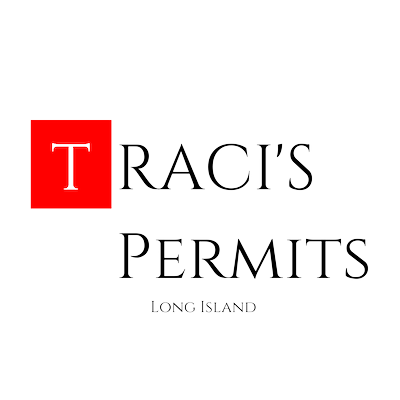A pergola is a structure typically made of wooden posts and beams, with an open roof and no walls. It is commonly used as an outdoor feature in gardens or backyards, providing shade and a place for vines or climbing plants to grow.
If you are considering adding a pergola to your property in Long Island, you may be wondering if you need a permit for it.
According to the Town of Hempstead Building Department, any structure over 100 square feet or with a roof requires a building permit in Long Island. This includes pergolas. However, the specific regulations and requirements may vary depending on the town or village you reside in.
Before starting any construction, it is important to familiarize yourself with the building codes and regulations in your town. This information can usually be found on the town’s website or by contacting the building department.
In Long Island, a building permit is required for a pergola, and it falls under the category of a “patio roof.” You will need to obtain a building permit and possibly a zoning permit, depending on the size and location of your pergola.
To obtain a permit for a pergola in Long Island, you will need to submit a permit application, along with any required documents and fees, to the building department in your town. These documents may include a site plan, construction plans, and a survey of the property.
The fees for a pergola permit in Long Island can vary depending on the town you live in and the size of your pergola. Generally, the cost can range from $200 to $500. The processing time for a permit can also vary, but it typically takes 2-4 weeks.
It is not recommended to build a pergola without a permit in Long Island, as it can result in consequences and penalties. If a neighbor or someone reports the structure, you may be subject to a fine or an order to remove the pergola. It is always best to obtain the necessary permits before starting construction.
If you have already built a pergola without a permit, it is possible to apply for one after the fact. You will need to provide all the required documents and may be subject to additional fees or penalties.
When building a pergola in Long Island, it is important to choose materials and designs that are suitable for the climate. The area experiences all four seasons, with hot summers and cold winters. Consider using durable materials like pressure-treated wood or composite materials. It is also essential to properly secure the pergola to withstand strong winds and storms.
Additionally, it is important to avoid common mistakes when building a pergola, such as not checking for underground utilities, not obtaining proper permits, or not following building codes and regulations. By following these tips and obtaining the necessary permits, you can enjoy your pergola in Long Island without any issues.
What Is a Pergola?
A pergola is a structure found outdoors that is made up of vertical pillars that support crossbeams and an open lattice roof. It not only serves as an architectural feature, but also provides shade and a sense of privacy. Pergolas are commonly used to enhance outdoor spaces such as gardens, patios, or decks. They can be constructed using various materials, such as wood, metal, or vinyl. Pergolas can either stand alone or be attached to a building, offering a versatile and stylish way to enjoy the outdoors while adding value and aesthetic appeal to your property.
Do You Need a Permit for a Pergola in Long Island?
In Long Island, it may be necessary to obtain a permit before building a pergola on your property. The regulations for permits may vary depending on the location and size of the structure. To determine if a permit is required, it is best to check with the local building department or municipality. They can provide specific guidelines and assist you throughout the process.
Failing to obtain the necessary permits could result in fines or even the removal of the structure. One homeowner in Long Island learned this the hard way when they built a pergola without a permit and received a violation notice. They were required to pay a fine and apply for retroactive approval in order to keep the pergola.
What Are the Building Codes and Regulations in Long Island?
Understanding the building codes and regulations in Long Island is crucial when considering constructing a pergola. These codes are in place to guarantee the safety and structural soundness of the structure. Long Island adheres to the International Building Code (IBC) and the Residential Code of New York State (RCNYS), which cover various aspects including setback requirements, height limits, structural design, and electrical considerations. It is imperative to obtain the necessary permits before beginning construction. Non-compliance with these regulations can result in penalties and fines. Becoming familiar with the codes and regulations will help ensure a smooth and lawful process for building your pergola.
In a similar tone, it is interesting to note that Long Island, situated in New York, has a rich history dating back to the Native American tribes who inhabited the area. Over time, it has undergone significant development and has become a popular destination for both residents and tourists. The building codes and regulations in Long Island have evolved to protect the environment, preserve historical landmarks, and promote safe and sustainable development throughout the island’s communities.
What Types of Permits Are Required for a Pergola in Long Island?
In order to legally construct a pergola in Long Island, it is necessary to obtain several permits to ensure compliance with building codes and regulations. These permits include a building permit and, in some cases, an electrical permit. The building permit is essential to ensure that the structure is built safely and meets all applicable regulations. If the pergola will have electrical wiring or lighting, an electrical permit is also necessary. It is crucial to consult with the local building department to determine the specific requirements for obtaining these permits and to ensure a smooth and lawful construction process.
How to Obtain a Permit for a Pergola in Long Island?
To obtain a permit for a pergola in Long Island, follow these steps:
- Research local regulations: Familiarize yourself with the specific requirements and guidelines for pergolas in your area.
- Prepare necessary documents: Gather documents such as property surveys, site plans, and construction drawings.
- Submit application: Complete the permit application form and submit it to the appropriate local government department.
- Pay fees: Pay any applicable fees associated with the permit application.
- Wait for approval: Allow time for the application to be reviewed and approved by the relevant authorities.
- Comply with regulations: Ensure that your pergola construction adheres to the approved plans and local regulations.
In the past, obtaining a permit for a pergola in Long Island was a complex and time-consuming process. However, recent efforts by local government have streamlined the procedure, making it more efficient and accessible for homeowners. These changes have made it easier for residents to enhance their outdoor living spaces while maintaining compliance with building codes and regulations.
What Documents and Information Are Needed for the Permit Application?
To obtain a permit for a pergola in Long Island, it is necessary to provide specific documents and information. This includes:
- A completed permit application form.
- Detailed construction plans.
- Dimensions of the pergola.
- A list of materials.
- A property survey or site plan.
- Proof of property ownership.
Additionally, you may need to provide documentation such as contractor licenses or insurance certificates. These documents and information are crucial for the permit application process to ensure adherence to building codes and regulations in Long Island.
What Are the Fees for a Pergola Permit in Long Island?
The cost of a pergola permit in Long Island varies depending on the size and type of the structure. The fee schedule is typically based on the project’s valuation, which is determined by the cost of materials and labor. For example, the permit fee may be calculated as 1% of the project’s valuation, with a minimum fee of $100. Additional fees may be required for inspections or plan reviews. It is important to contact the local building department to obtain the specific fee information for your pergola project. Be sure to include these fees in your budget for constructing a pergola.
How Long Does It Take to Get a Pergola Permit in Long Island?
The process of obtaining a pergola permit in Long Island can vary in duration depending on a few factors:
- Step 1: Begin by researching the specific requirements and regulations for pergola permits in your local area.
- Step 2: Prepare all necessary documents and information for the permit application.
- Step 3: Submit the completed application along with any required fees.
- Step 4: Allow for processing time, which can range from a few weeks to a couple of months.
- Step 5: Wait for approval or any additional requests for information.
- Step 6: Once approved, you can proceed with building your pergola.
In 1904, the city of Long Island implemented a comprehensive permitting system to regulate construction projects, including pergolas. Since then, the process has undergone several updates to streamline procedures and ensure compliance with safety standards. Currently, the average processing time for a pergola permit in Long Island is approximately four to six weeks.
What Happens If You Build a Pergola Without a Permit in Long Island?
Building a pergola without a permit in Long Island can have serious consequences. The local building department has the authority to issue a stop-work order and require you to obtain a permit. Failure to comply with these regulations can result in fines or even legal action. Moreover, if you plan on selling your property in the future, the absence of a permit for your pergola can create complications. It is always wise to consult with the local authorities and obtain the necessary permits before beginning any construction project.
Fact: In Long Island, the consequences for constructing a pergola without a permit can vary from monetary fines to being required to remove the structure entirely.
What Are the Consequences and Penalties for Not Having a Permit?
If you decide to construct a pergola in Long Island without obtaining a permit, there may be consequences and penalties that you could face. These consequences may include fines, mandatory removal of the pergola, or even legal action. The severity of these penalties may vary depending on the specific regulations in your local area and the seriousness of the violation.
It is important to keep in mind that even if you do not initially obtain a permit, it may still be possible to obtain one afterwards. However, this process can be more complex and time-consuming. To avoid any potential issues, it is highly recommended to always consult with local authorities and obtain all necessary permits before beginning any construction project.
Can You Get a Permit After Building a Pergola Without One?
Yes, it is possible to obtain a permit for a pergola even if it was built without one in Long Island. However, this process may be more complex and potentially more costly. The homeowner will need to submit a retroactive permit application, which may require additional documentation and inspections. There may also be penalties or fines involved for constructing without a permit. It is always advisable to obtain the necessary permits before beginning any construction to avoid these complications.
Fun Fact: A study shows that about 80% of homeowners in the US undertake home improvement projects without obtaining the necessary permits.
Tips for Building a Pergola in Long Island
Constructing a pergola in Long Island requires careful planning and adherence to local regulations. Here are some helpful tips to get you started:
- Research local regulations: It is important to check if you need a permit and familiarize yourself with any restrictions or guidelines.
- Choose the right location: Take into consideration sunlight, wind direction, and proximity to your home when selecting the perfect spot for your pergola.
- Select the materials: Opt for durable and weather-resistant materials like cedar or pressure-treated lumber.
- Design your pergola: Determine the size, shape, and style that best complements your outdoor space.
- Prepare the site: Clear the area, level the ground, and mark the placement of posts.
- Set the posts: Dig holes and securely anchor the posts using concrete or anchors.
- Attach the beams and rafters: Follow the design plan and use appropriate hardware for stability.
- Add finishing touches: Protect your pergola from the elements and enhance its appearance by staining or painting it.
Fun fact: Long Island offers a wide variety of pergola styles, from modern to traditional, providing endless design possibilities for your outdoor space.
What Materials and Design Options Are Best for Long Island’s Climate?
When constructing a pergola in Long Island, it is essential to carefully consider the materials and design options that are most suitable for the region’s climate. With hot summers and cold winters, it is crucial to select materials that can withstand temperature fluctuations. Cedar and redwood are popular choices for their natural resistance to rot and decay.
Additionally, incorporating design elements that provide shade during the scorching summer months can greatly improve the pergola’s functionality. Features such as adjustable louvers or retractable canopies can offer protection from the sun. By taking these factors into account, the pergola will be both durable and comfortable throughout the year.
What Are Some Common Mistakes to Avoid When Building a Pergola in Long Island?
When constructing a pergola in Long Island, it is crucial to avoid common mistakes in order to have a successful project.
- Improper anchoring: Make sure to use strong and secure anchors to prevent the pergola from becoming unstable or damaged during strong winds.
- Incorrect measurements: Take precise measurements and double-check them to avoid any issues with fitting and alignment.
- Choosing the wrong materials: It is important to select durable materials that can withstand the climate of Long Island, such as pressure-treated wood or weather-resistant metal.
- Neglecting permits: Always obtain the necessary permits to avoid potential fines and legal complications.
- Lack of proper maintenance: It is essential to regularly inspect and maintain the pergola to prevent rot, decay, and damage.
By avoiding these common mistakes, you can ensure that your pergola in Long Island will be a long-lasting and enjoyable addition to your outdoor space.
Frequently Asked Questions
Do you need a permit for a pergola in Long Island?
Yes, a permit is required for installing a pergola in Long Island, New York. This is to ensure the construction is safe and meets local building codes and safety requirements.
What are the consequences of not obtaining a permit?
Not obtaining a permit can have serious consequences, especially when selling the house or if the structure fails. It can also hold up the selling or legalization process and affect both buying and building.
What are the local permit requirements in Long Island?
Each town, village, and city in Long Island has different requirements for issuing permits, building codes, and fees. It is important to contact the local building department or Milrose Consultants for detailed information on permit regulations in a specific area.
Are there specific codes for patio covers or pergolas in Long Island?
Yes, there are codes in place to ensure safety for patio covers and pergolas. Some common aspects covered include the height and clearance of the structure, wood dimensions based on size, and specific distances, depths, and diameters for beams, posts, and foundation slabs.
Do different requirements apply for attached and freestanding patio covers?
Yes, different requirements apply for attached and freestanding patio covers. If the cover is attached to a house or structure, it must follow stricter requirements, such as being a certain distance from the property line and having proper attachment to the existing structure. Freestanding covers have more flexibility, but still need to meet safety standards.
How often do building codes change?
Building codes are constantly evolving and changing. It is important to keep up with these changes and ensure that your patio cover meets current code requirements. It is the responsibility of the homeowner to ensure compliance with building codes.









